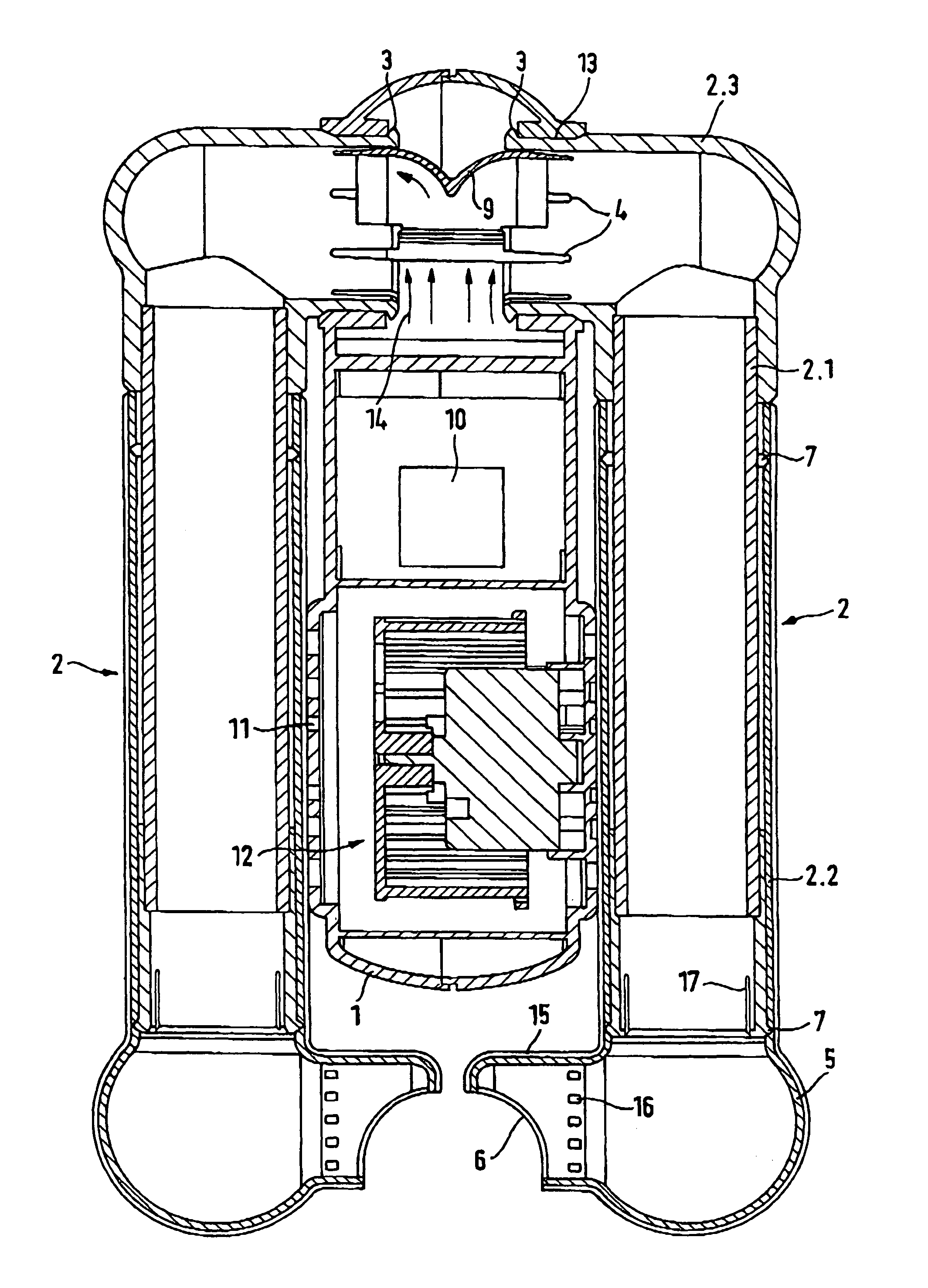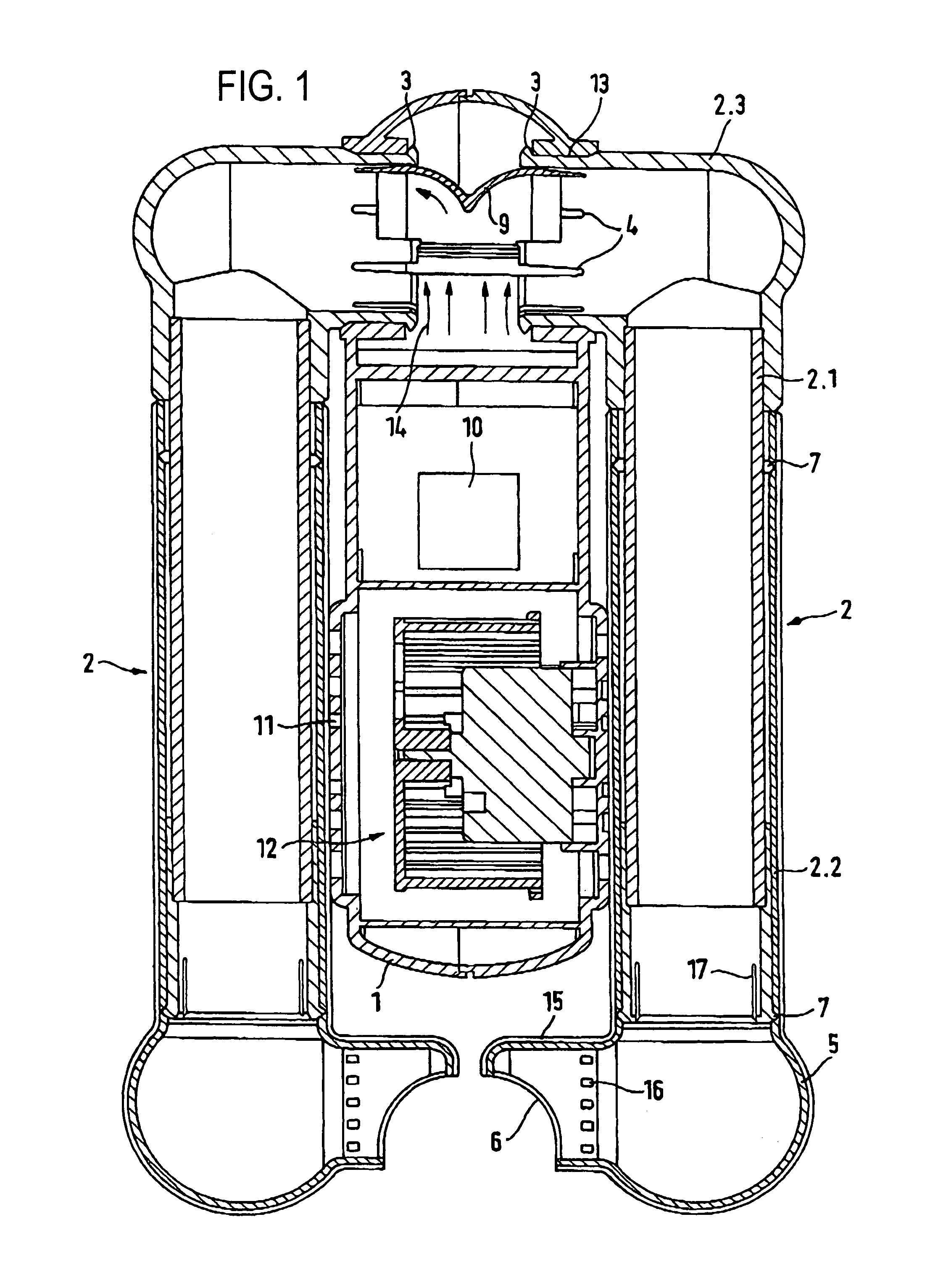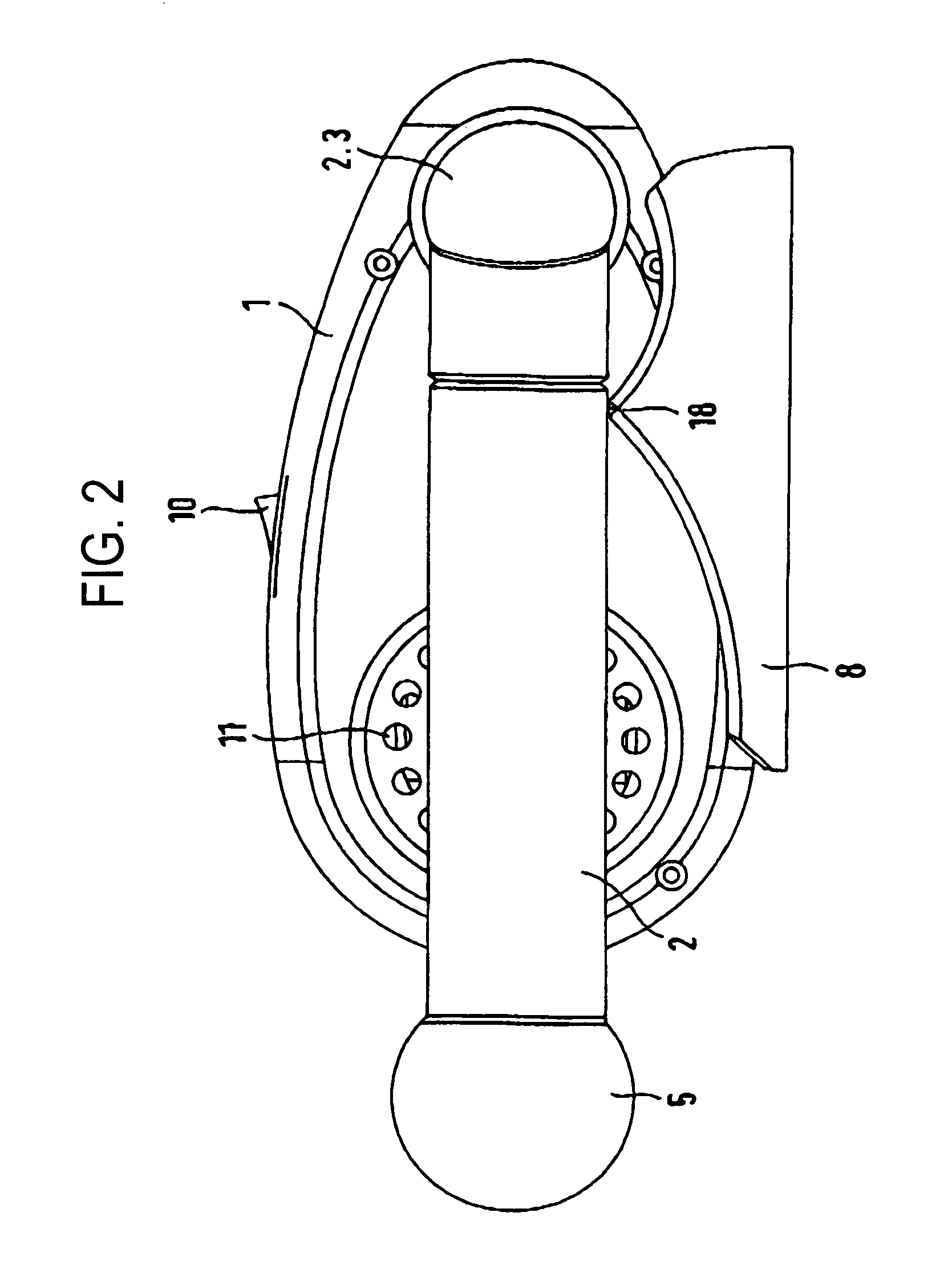Device for drying shoes, gloves or garments
a technology for drying shoes and gloves, applied in the direction of harvesting fruit hanging devices, washing apparatus, applications, etc., can solve the problems of wasting a lot of time, driers without lost parts have to be repurchased at great expense, and individual parts get lost, so as to achieve a small amount of force, prevent tipping, and use flexibly
- Summary
- Abstract
- Description
- Claims
- Application Information
AI Technical Summary
Benefits of technology
Problems solved by technology
Method used
Image
Examples
Embodiment Construction
[0021]The apparatus shown in FIG. 1 and FIG. 2 for drying shoes, gloves or articles of clothing comprises a housing 1 and two pipes 2 which are attached to the housing and which are arranged directly adjacent to the housing 1 like arms. In the housing 1 are contained an electrically operated fan 12 as well as electrical components for driving the fan 12, wherein the electrical supply can be delivered via a cable, not shown, from mains and / or a battery and / or a chargeable accumulator. To switch the fan on and off, a switch 10 is embedded in a narrow side wall of the housing 1. In the region of the fan 12 the housing is provided with intake openings 11 through which air is drawn in from the outside by the fan. The fan 12 includes a fan housing which is adjoined by an air duct (not shown), wherein in the air duct is arranged a heating device, e.g. a radiator (not shown), which heats the air delivered by the fan 12.
[0022]In the upper region of the housing 1 (seen in the view as in FIG. ...
PUM
 Login to View More
Login to View More Abstract
Description
Claims
Application Information
 Login to View More
Login to View More - R&D
- Intellectual Property
- Life Sciences
- Materials
- Tech Scout
- Unparalleled Data Quality
- Higher Quality Content
- 60% Fewer Hallucinations
Browse by: Latest US Patents, China's latest patents, Technical Efficacy Thesaurus, Application Domain, Technology Topic, Popular Technical Reports.
© 2025 PatSnap. All rights reserved.Legal|Privacy policy|Modern Slavery Act Transparency Statement|Sitemap|About US| Contact US: help@patsnap.com



